 I think my husband and I are great pet parents. We both grew up with companion animals and we consider them not things, but sentient creatures of other species who have souls and value. We have never humanized our dogs, but the reality is that we would do, and have done, anything for them and they have lived long and very full lives. In spite of the fact that I think any dog would be fortunate to share our lives with us, many rescue groups simply would not agree. When we lived on our 8 acre parcel for almost 20 years, our property was not fully fenced. Now that we are in our new home, our 3+ acre parcel is also not fenced. We've thought about it, but the benefit v. cost balance just has not been worth it so far. The lack of a fence alone would cause many rescue groups to decline to adopt a dog to us. It matters not that we met our dogs’ every need, they are canine members of our family and they are never outside unattended. No fence = no dog. I first encountered this unreasonable mindset about animal adoption when I read Nathan Winograd’s book “Irreconcilable Differences: The Battle for the Heart and Soul of America’s Animal Shelters.” The book contains a chapter called “Good Homes Need Not Apply” in which Nathan sets out the obstacles often used by shelters and rescue groups which keep animals from being adopted using fixed and arbitrary rules that are based more on a suspicion of the public than on a focus of getting animals into homes.  One of these obstacles relates to the concept of adoption fees. Not a week goes by that I don’t end up in a discussion with someone either with a rescue group or about an animal shelter regarding adoption fees. I know of rescue groups which charge high adoption fees because they don’t do enough marketing and fundraising and they are trying to cover their veterinary costs through the fees. I know of other rescues which charge fees which they think separate the good people from the bad people and are an indicator of an adopter’s future ability to care for the animal. The logic goes like this: if you cannot afford our $250 adoption fee than you can’t afford to keep and care for a dog. No $250 = no dog. On the flip side, I know some in rescue or in shelters who are completely opposed to the concept of fee waived adoptions for similar reasons. The mindset is that if you will only adopt an animal from a shelter when it’s free, that means that you are not financially prepared to pay for that animal’s care for the duration of his or her life. One contact asked me one time, “if we give animals away from free, what does that say about the value of the animal?” My answer was simple. It means that you value the life of that animal more than you value some nominal fee. It means that when it comes to animals in need of homes, we cannot equate cost with value or worth. A number of articles have been written over the years related to the concept of fee waived adoptions by people with a lot more experience than me and you can find them using a simple Internet search on the topic. In spite of what conventional wisdom may dictate, studies have shown that there is little correlation between the amount of money someone pays for an animal and their devotion to the animal or ability to care for the animal. People take in free animals all the time as acts of kindness and to save their lives. People get animals from animal shelters during fee waived adoptions all the time, not because of the "deal" they are getting as much as the waived fee served as an incentive to act and to be part of something bigger than themselves. We need look no further than a recent phenomenon that happened in Sacramento to see the value in fee waived adoptions. A local businesswoman offered to pay the adoption fees for all pets adopted from the Front Street Animal Shelter during the month of December as an incentive to get animals adopted. When people found out, word spread and people wanted to be part of something special. Some people camped out outside the shelter before it opened. Others arrived hours before opening time, forming a line that wrapped around the block. Not only were all of the animals adopted out, but the shelter was able to import animals from other local shelters and find them homes. This wasn't a situation of people lining up because they didn’t want to pay an adoption fee. It was a situation of people wanting to adopt after hearing about a wonderful event and wanting to do something compassionate. The results have been called "epic." I look forward to finding out how many animals were adopted in this one month alone. I have a lot of contacts in advocacy and rescue circles and all of this talk about adoption fees led me to a conversation with Denise Mulliken of Fayetteville, Arkansas, recently. Denise and I know each other from No Kill advocacy circles; she and her husband, Frank, are long time supporters of the No Kill Equation and we have a lot in common. I was thrilled to learn recently that not only have Denise and Frank started their own rescue group, but they don’t charge adoption fees at all. Yes, you read that correctly. No adoption fees. I asked Denise to tell me more about House of Little Dogs, Inc., how they function and about the decision to not charge an adoption fee. She shared this information: The basis for all of our decisions about how we run our rescue has been No Kill. We’re actually pretty new to animal welfare. We didn’t become seriously involved until about four years ago when we met some No Kill advocates here in Fayetteville, started reading about it, reading Nathan’s writings. . .so by the time we decided to get into rescue, I guess No Kill principles were instilled in us: embracing compassion and hope, assuming a can-do attitude, postitive marketing and promotion of adoption, thinking outside the box and trusting our community and looking at our community as the solution to pet homelessness. When Frank and I decided we wanted to run our own rescue, we decided we were going to run it counter to almost everything we’d seen so many other rescues do. I hope that others in the rescue community and the shelter industry will take some time to think outside the box like Denise and Frank and will consider that the focus should be on putting animals in homes while having some faith that most people are essentially good at heart. An adoption fee is not an indicator of someone’s level of love or commitment or willingness to care for an animal for the duration of his or her life. We have all heard of celebrities who have paid thousands of dollars for animals and then treated them as disposable things. I personally know of people who have paid thousands of dollars for dogs from breeders only to decide the pets were too much work and they wanted to get rid of them. We do better when we focus on our goal – getting animals into loving homes – than when we focus on dollar amounts as an indicator of someone’s capacity to be a good pet caregiver. I am not suggesting that all rescues function the same way as House of Little Dogs. I think it is perfectly reasonable to charge some adoption fee which does help cover some of the vetting costs so the rescue can remain viable. Many animals in rescue require a great deal of veterinary care and for some groups it makes sense to charge a fee not as a test of someone's good intent, but as a business decision. I am also not suggesting that all municipal animal shelters function the same way and waive fees all the time. I support fee waived adoptions for bread and butter programs like Pets for Vets or Seniors for Seniors or even to move special groups of animals like older animals, pit bull-type dogs or special needs animals. When municipal shelters waive fees all the time as a go-to way to place animals, they can make it harder for the rescue groups in their communities which they rely on to pull animals to compete financially (as many of those rescues are likley charging some nominal adoption fee). I know this subject can be polarizing. People can be firmly on one side of the argument or the other. I'm just asking you to think about it and about what the adoption fees being charged really mean. What they represent. We found Aspy, our beloved Eski boy, living in a cow pasture with a herd of cattle in a property adjacent to ours. He was free. But he was priceless to us. And he had a long and wonderful life with us. With no fence. (image of Front Street Shelter adoption event courtesy of the Sacramento Bee)
1 Comment
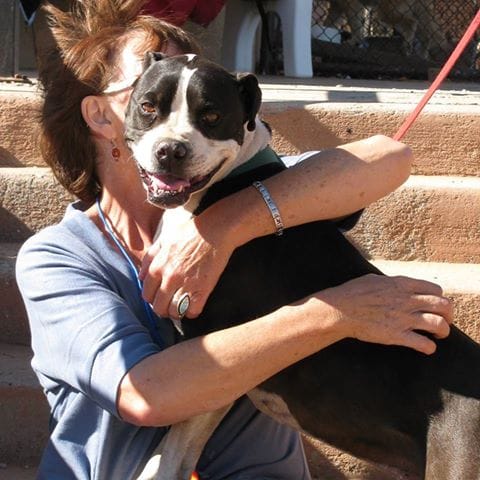 Most dogs have happy and healthy homes and their humans love them, treat them with kindness and consider them their best of friends. But there are many cases where dogs don't have a home and may end up in a shelter, are strays or are being abused by their owners.. These are the dogs most in need of help in your community, and for them just doing a little can mean a lot. Consider Adoption The best thing you can do for a dog is to adopt it. While that won't work for everyone, there is no doubt that adopting a dog and giving it a permanent home can't be beaten. But consider this. You may not be able to adopt a dog because of your situation, where you live, your work schedule, or other issues, but do you know of someone who might? A friend or family member, a friend of a friend, an acquaintance that may want or need a companion, and all it may take is an idea with a phone call to get the ball rolling and potentially make a very happy occasion for a dog and its new owner. Volunteer Sure, nothing beats adopting a dog, but every pet shelter needs volunteers to help manage their dog population. And this doesn't have to be a full-time project, either. You could go in for an hour a day, or every other day, once per week and clean kennels. You could go in and walk the dogs, you could help during feeding time, you can help giving medications, and there are myriad other ways to be involved as a volunteer. Just doing something like that may make the difference in a dog that is happy to see you, and will then show that love to any prospective owner who is looking to adopt. 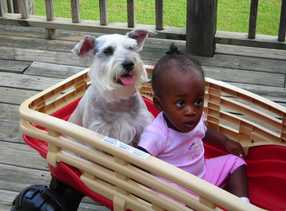 Be A Sponsor If you don't have time to volunteer, consider being a sponsor. Sponsoring means you'll provide a particular dog with food, medicine or special needs for as long as it stays in a shelter. Even though you may not be directly involved with your dog, being a sponsor gives it a chance to thrive and be taken care of until a potential owner shows up. Doing that might make all the difference in the world. Foster care A better way to be a sponsor is to actually foster care a dog until a permanent home is found. It will live with you until such time as an owner is found, and in that way, it won't take up space at a shelter where the space might be needed more. You may be able to do this for only a limited amount of time, like say during a holiday when you'll be at home, or on vacation from work. Even doing that frees up space and acclimates a dog to a human setting, which can only be a positive thing for being permanently adopted down the road. Volunteer Other Skills Sure, we touched on volunteering your pet skills, but how about skills that are not pet related? A shelter may need maintenance or minor repair work, and by doing that, you'll allow them to spend more money on the care of the dogs. Although it is an indirect way of volunteering, it serves the same purpose and can be just as satisfying no matter what. Keep Your Eyes and Ears Open Stray dogs can pop up anywhere, and they need to be off the streets and in a shelter where they can be helped. If you see a dog roaming the streets without any apparent ownership, call your local Humane Society or shelter and let them know. Trust me, you'll be doing that stray dog a favor by doing so. Also, and everyone hates to admit this, but there are some bad dog owners out there. Any dog that is restrained out in the open in all types of weather needs help. A call to the Humane Society or shelter will get a someone out to the property where the dog is, and the situation can then be ascertained by a professional. It's Up To You No one wants to see a dog abused, penned up in a shelter or stuck in a kennel. By doing any one of the things listed, you can make a difference for the dogs in your community, and it just may be the best feel good thing you've ever done, for you and a dog. About the Author Mary Nielsen is a passionate dog lover, blogger, and part-time music teacher. She founded MySweetPuppy.net to share her ups and downs of being a pet parent to a bunch of adorable mutts. When she is not playing with them or teaching, you can find her experimenting in the kitchen. (images courtesy of Mindi Price, Delores Francois and Becky Lyn Tegze)
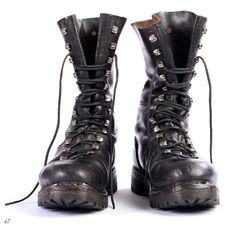 I have been known to tell people that I work in the legal field by day but that I am an animal welfare advocate always. I have a paying job like most folks, but my passion is related to helping animals and helping the people who help animals. I am also an Army veteran so I tend to be a bit direct in how I write and talk and I tend to be pretty outspoken. Your tax dollars at work. The good thing about this combo of former GI Jane + paralegal + animal advocate is that the knowledge I have from all of these aspects of my life tends to come in handy together. It also means that I have strong opinions about how we spend our tax dollars and about we support our armed forces. Regardless of your political leanings, I want you to “hate war. Love the American warrior,” as was once so eloquently stated by Lieutenant General Hal Moore. I never served in combat and never got even close. I did a very unpleasant tour in South Korea once upon a time. I was stationed in Germany when Gulf 1 happened (while people around me were deployed) and I got out of the Army as issues in Bosnia were heating up and shortly after a Yugoslavian neighbor asked me how to get body armor and helmets on the black market. I served in a lot of places and did a lot of crazy things for God and Country, but my life was never at risk and I suffered no long-term effects from my service other than a compulsive need to keep things organized and a disdain for camping. Many of our veterans are not so fortunate and the sad reality is that many of them are really just invisible to us when you get right down to it. I know that it is human nature to focus on those issues which are on our personal radar. Unless something has affected us personally in some way, we may say we think about it or care about it, but the reality is that we only have a passing awareness at best. Such is the case with our veterans who suffer from PTSD (Post Traumatic Stress Disorder) and TBI (Traumatic Brain Injury) due to their service, combat or otherwise.  It is not news to anyone paying attention in any limited way that a large number of our veterans now suffer from wounds which we may not see but which are very, very real. It is also not news that we had, and still have, issues with the Department of Veteran’s Affairs regarding how veterans are treated and how quickly they are treated. It is a public shame that we ask so much of the members of our armed forces while paying them so little and then failing to live up to our obligations as a society when their service leaves them unable to function on a day-to-day basis. If you heard about the recent 22 Push-Up Challenge to raise awareness, you now know that 22 of our veterans commit suicide every day. Every. Day. I believe there is hope on the horizon and this is a topic where my background and my interests intersect: the topic of using dogs to help veterans with PTSD and TBI and use of shelter dogs in particular. I don’t know very much about how the VA spends your money and my money, but I do know this. If someone took a vote, I would immediately say yes to putting my tax dollars toward government funded grant programs to help pair our veterans in need with the canine companions who can help them in ways that counseling, pharmaceutical assistance and even their loved ones cannot. 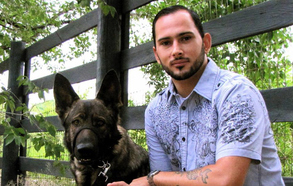 We’ve all heard of programs that use service dogs to help people who are visually or physically impaired. I first heard of a program which pairs veterans with PTSD and TBI about a year ago when we watched an A&E Series called Dogs of War which highlighted the work of a nonprofit group called Paws and Stripes which is based in New Mexico. The series covered the work of the nonprofit in finding shelter dogs who are suited to be service dogs for veterans and how the nonprofit trains those dogs (and the veterans) to be paired teams. The series was fascinating to me and I am not ashamed to admit that I cried during every episode. I cried because of the problems faced by the men and women helped by Paws and Stripes. I cried for the dogs pulled from kill shelters to become service dogs. And I cried knowing how very many more veterans and dogs could be helped through similar programs. For me, this is a win, win, win. We help the veteran, we save the life of a dog and we prevent taxpayer dollars from being used to kill perfectly healthy dogs in our animal shelters. I have since learned there are a number of nonprofit groups much like Paws and Stripes across the county who are doing wonderful work. One such group launched recently in my own area and is called, quite appropriately, “Got Your Six.” The organization is led by a contact of mine named Laurel Rose whom I met in my no kill adventures and to whom I have referred many a contact for “dog issues” which are more often than not really issues with people who do not speak dog. Laurel’s organization is set up to help veterans who already have a dog (in the event that dog can be trained as a service dog), but she also works with local animal shelters and rescue groups to get dogs who are well-suited to the type of service and companionship which helps veterans. I could not be more thrilled about having this new group in our military town of Huntsville, Alabama. I hope a day comes when more of our veterans are helped with service dogs and that the primary source of those dogs is our animal shelters. If you’d like to learn more about efforts to enact legislation to federally fund a VA program to place service dogs with our veterans, I encourage you to learn about the P.A.W.S. Act (Puppies Assisting Wouded Servicemembers) being advanced by Corporal Cole Lyle, a Marine Corps veteran. If you’d like to learn more about programs in your area or state to pair veterans with PTSD and TBI with service dogs, contact your local veteran’s advocacy organization or check this list found on the Paws and Stripes website. Let's all get behind these programs which help our veterans and which save our dogs in the process. We're Americans. And this should be important to all of us. (images courtesy of the United States Army and Paws and Stripes, Inc.)
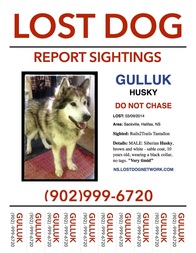 It happens every day. Pets get lost or go missing, people frantically try to find them and in some cases, they never do. As the go-to animal person at my office, I hear about this regularly. The family cat who was scared by fireworks on New Year’s Eve and bolted through an open door. The newly adopted rescue dog who was let outside to relieve herself and ran because she was scared by a car. Maybe the worst one I heard at work was about an elderly dog with limited vision who slipped out a door when some contractors were doing renovation work. The family felt she could not have gone far and did all the right things: searched the neighborhood, knocked on doors, put up flyers, put a “lost” ad in the local paper, put food and her bedding outside. They even went to the municipal animal shelter with photos in hand to look for her, only to be told, “sorry, your dog is not here.” They searched and knocked on doors for days. After almost a week of anguish, the family went back to the shelter one more time on a hunch, only to discover their beloved dog had been there for a week and was scheduled to be euthanized the next day. This family was both lucky and incredibly relieved. Some are not so lucky.  I know that animals end up in shelters for a host of reasons and that some of those reasons have to do with public irresponsibility. But not every animal in a shelter is there because of someone’s fault. We do better at a society to treat each and every shelter animal as someone’s beloved pet who is lost than to presume that “the irresponsible public” does not care enough to keep them safe. Gates get left open by children, contractors pay more attention to ladders and tools than to cats and animals are displaced due to traffic accidents and bad weather. Life happens. It is a reality of our animal sheltering system that healthy and treatable animals are destroyed every day and in most cases these are simply lost pets who could not be identified in order to be reunited with their families. It is a national tragedy. I’m a huge proponent of microchipping all pets whether they live inside of not. You simply must prepare for the possibility that they may end up outside and while collars and tags are also advised (with breakaway collars for cats for safety purposes), nothing can really take the place of what amounts to a barcode for your companion animal to help them be identified if they get lost and end up in a shelter, with a rescue group or at a veterinary office. Most microchips cost very little, including lifetime registration, and really can make the difference in ensuring your pet can be identified if he or she is lost (or even if they are stolen). If you do a simple search on social media using the words “lost found pet” you will come up with a variety of groups and pages all trying to help people find lost pets or trying to reunite found pets with the families searching for them. As valuable as these pages may be, they all have one thing in common. They are geography specific. Just because your dog goes missing from your home in X city doesn’t mean he or she will stay in that city. He may very well end up in Y county for whatever reason and you may never know that. Animals don’t know geographic boundaries and the reality is that once your dog or cat is outside of your control, you really never know how far they will travel either on foot, in the back of a truck bed or in a vehicle or even taken an unknown distance by a good Samaritan who is simply trying to help them. All this leads to an announcement about a wonderful new tool in our animal lover’s toolbox I learned about recently: a website called Helping Lost Pets (HeLP). The website has been active since 2010 and is used across Canada and the United States. The site is the brainchild of Rob Goddard of Goddard Information Systems Limited and is currently funded by his company (with hopes to be funded by sponsors and advertising at some point). I learned about Helping Lost Pets just recently and I’ve been telling everyone I know about it because it’s just such an incredible tool. The concept is simple: the website is a map-based site and is free to use for shelters and animal owners alike. If you run a shelter or animal control department and you pick up animals running at large or found animals reported to you, you enter them on the site with an image and some basics about where they were found. This allows pet owners to look for their lost pets. If you are an animal caregiver and your pet goes missing, you enter them on the site with an image and some basics about where they belong. This allows animal control personnel and social media platforms to help reunite lost pets with their families. Helping Lost Pets describes the website this way: HelpingLostPets.com (HeLP) is a FREE nationwide database for lost and found pets that connects shelters, veterinary clinics, rescue groups, the public, and volunteer groups across the nation to effectively reunite lost pets with their owners. What makes HeLP unique is it is mapbased and fully searchable by breed, location, size, color, gender, and other identifiable information, making it easy to match lost and found pet listings. To ensure our listings stay current, our system automatically contacts owners/finders for status updates at defined intervals. This allows our system to remain uptodate and display only pets that are still missing and truly need our help getting home. We have found that flyers are one of the most effective ways to reunite a lost pet. When someone list a pet, free flyers are instantly generated to provide an effective tool in getting a pet home. What makes the website even more powerful is the many volunteer groups across the country that also use the website to help pets get back home. Lost Dogs of America is their largest partner with chapters in over 30 states now.
If you manage or are affiliated with an animal control agency, rescue group or veterinary office which often takes in lost pets, I cannot encourage you strongly enough to learn about this wonderful resource. If you are a pet owner, I encourage you to take all the normal steps to find your pet: talking to your neighbors, putting up flyers, putting an ad in a local paper, posting on social media, putting food and bedding outside, etc. Having a pet go missing to never be found again can be a life-altering experience for you and can be a life-ending experience for your pet. Please use HeLP. It’s quick, it’s free and you just never know when using that one extra tool in the toolbox will help you be reunited with your beloved companion. Lost Dog Recovery Tips: http://lostdogsofamerica.org/lost-dog/recovery-procedures/ Lost Cat Recovery Tips: http://www.missingpetpartnership.org/recovery-tips/lost-cat-behavior/ |
AuthorI am an animal welfare advocate. My goal is to help people understand some basic issues related to companion animals in America. Awareness leads to education leads to action leads to change. Archives
July 2024
Categories
All
image courtesy of Terrah Johnson
|
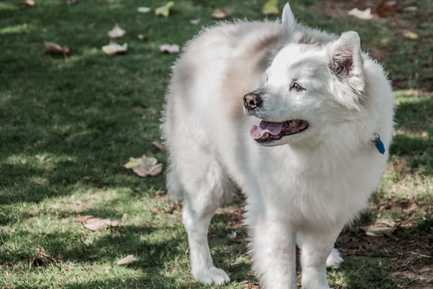
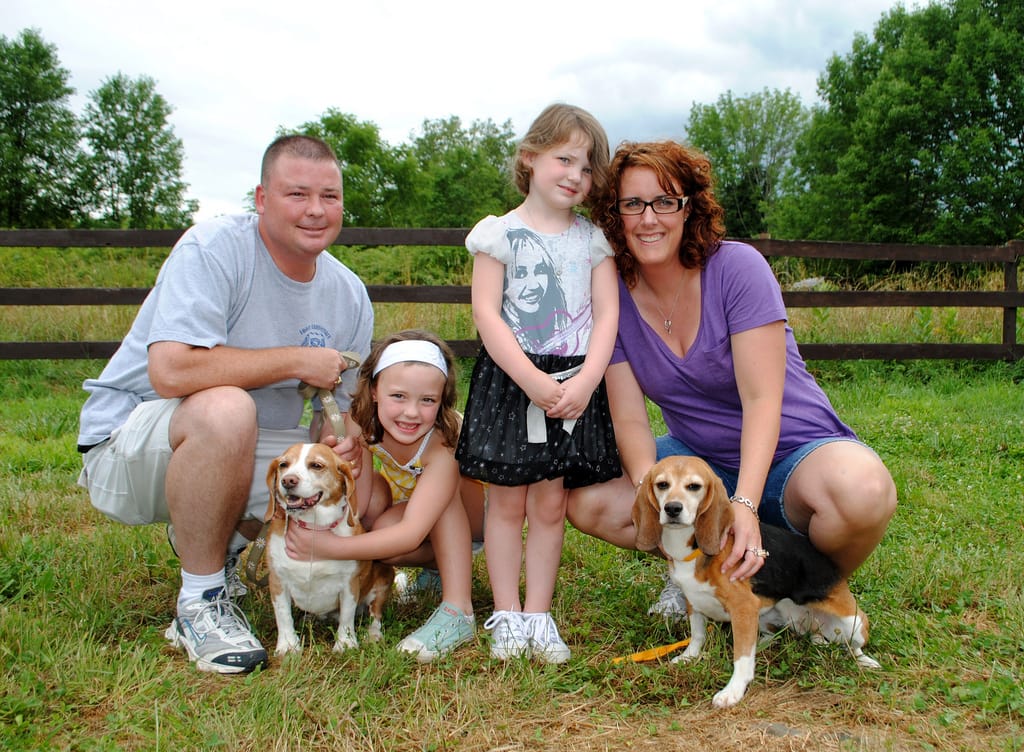

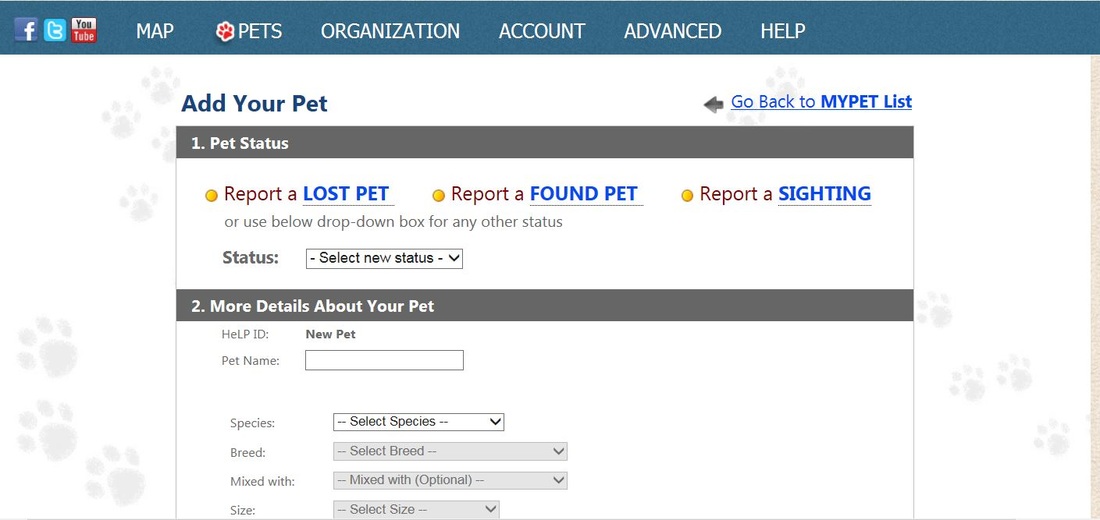
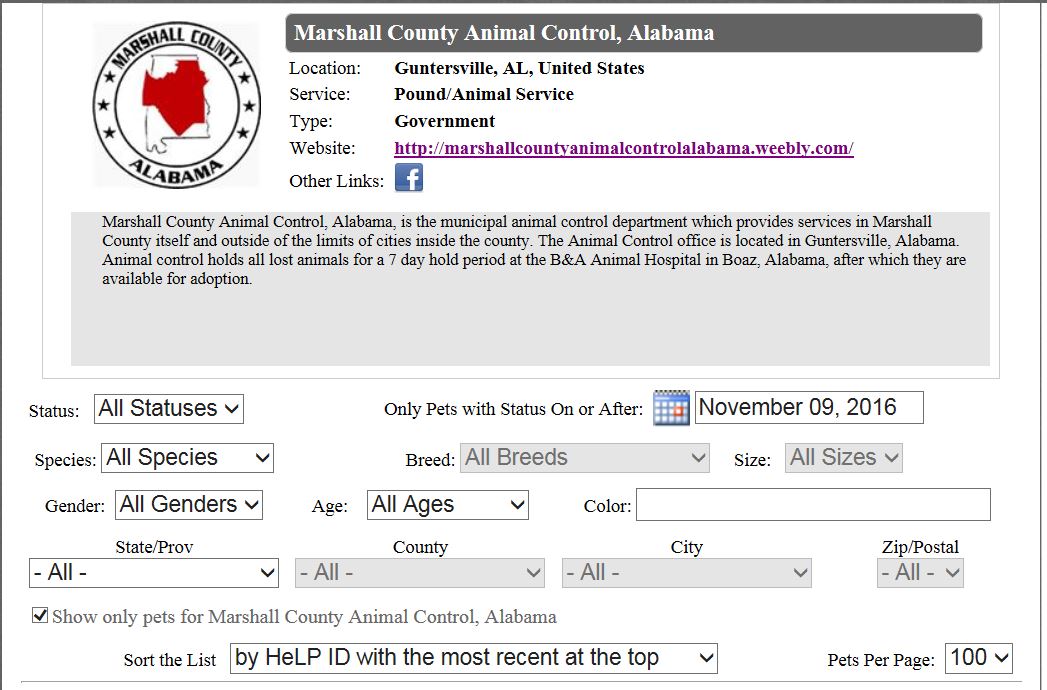
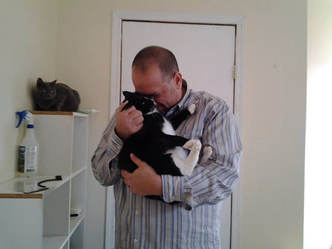
 RSS Feed
RSS Feed